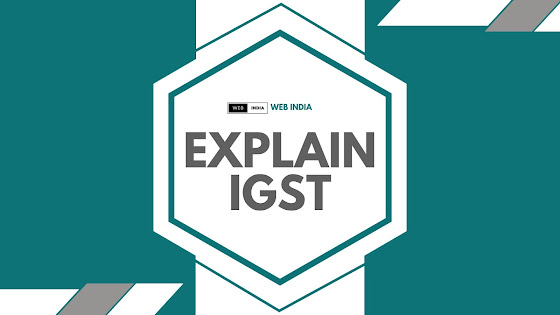The Integrated Goods and Services Tax (IGST) is a type of indirect tax that was introduced in India as part of the Goods and Services Tax (GST) regime that came into effect on July 1, 2017. The IGST is a tax that is levied on the supply of goods and services that take place across state borders in India. In this article, we will explain the IGST in detail, including its meaning, scope, rate, and various aspects.
Meaning of IGST:
The Integrated Goods and Services Tax (IGST) is a tax that is levied on the supply of goods and services that take place across state borders in India. The IGST is a type of indirect tax that is levied on the value-added to goods or services during each stage of production or distribution, and it is charged at the point of consumption.
The IGST is a destination-based tax, which means that it is levied at the place where the goods or services are consumed or used. For example, if goods are produced in Maharashtra and sold in Karnataka, the IGST will be levied in Karnataka, as it is the place of consumption of the goods.
Scope of IGST:
The scope of IGST is wide and covers a variety of goods and services that are supplied across state borders in India. The IGST applies to all types of transactions, such as sale, transfer, barter, lease, and import of goods and services.
The IGST is levied on the supply of goods and services between two different states in India or between a state and a union territory. It is also applicable to the supply of goods and services that take place in the course of inter-state trade or commerce, including those made to or by a Special Economic Zone (SEZ) unit or developer.
Rate of IGST:
The rate of IGST varies depending on the type of goods or services being supplied. The GST Council, which is responsible for setting the tax rates under the GST regime, has fixed the IGST rate at 18% for most goods and services.
However, certain goods and services are subject to a lower rate of IGST, such as food items, textiles, and footwear, which are taxed at 5%. Some goods and services, such as luxury cars, tobacco products, and aerated drinks, are subject to a higher rate of IGST, which is 28%.
Registration under IGST:
Any person or entity that is engaged in the supply of goods or services across state borders in India must register for IGST. The registration process is the same as that for GST, and it involves obtaining a unique Goods and Services Tax Identification Number (GSTIN).
The registration process for IGST can be completed online through the GST portal. Once the registration is complete, the registered person or entity is required to file periodic returns and pay the IGST on a monthly or quarterly basis, depending on the turnover of the business.
IGST vs. CGST and SGST:
IGST, CGST, and SGST are three different types of taxes that are levied under the Goods and Services Tax (GST) system in India. Here's a detailed comparison of IGST vs. CGST and SGST:
Meaning:
IGST: It is a tax levied on inter-state transactions of goods and services.
CGST: It is a tax levied on intra-state transactions of goods and services by the central government.
SGST: It is a tax levied on intra-state transactions of goods and services by the state government.
# Applicability:
IGST: It is applicable to the supply of goods and services that take place across state borders in India.
CGST: It is applicable to the supply of goods and services that take place within the same state.
SGST: It is applicable to the supply of goods and services that take place within the same state.
# Tax Rate:
IGST: The IGST rate is fixed at 18% for most goods and services, while some goods and services are
taxed at a lower or higher rate.
CGST: The CGST rate is the same as the IGST rate, i.e., 18% for most goods and services, with certain exceptions.
SGST: The SGST rate is also fixed at 18% for most goods and services, with certain exceptions.
# Tax Collection:
IGST: The IGST collected by the central government is distributed among the state governments based on a pre-determined formula.
CGST: The CGST collected by the central government remains with the central government.
SGST: The SGST collected by the state government remains with the state government.
# Utilization of Tax Revenue:
IGST: The revenue collected under IGST is utilized for the development of infrastructure and other purposes in the state where the goods and services are consumed.
CGST: The revenue collected under CGST is utilized for the development of infrastructure and other purposes by the central government.
SGST: The revenue collected under SGST is utilized for the development of infrastructure and other purposes by the state government.
Registration:
* IGST: Any person or entity engaged in the supply of goods and services across state borders must register for IGST.
* CGST: Any person or entity engaged in the supply of goods and services within the same state must register for CGST.
* SGST: Any person or entity engaged in the supply of goods and services within the same state must register for SGST.
In summary, IGST is a tax that is levied on the inter-state supply of goods and services, while CGST and SGST are levied on the intra-state supply of goods and services by the central and state governments, respectively. The tax rates, tax collection, utilization of tax revenue, and registration requirements differ for each type of tax.



Post a Comment
0Comments